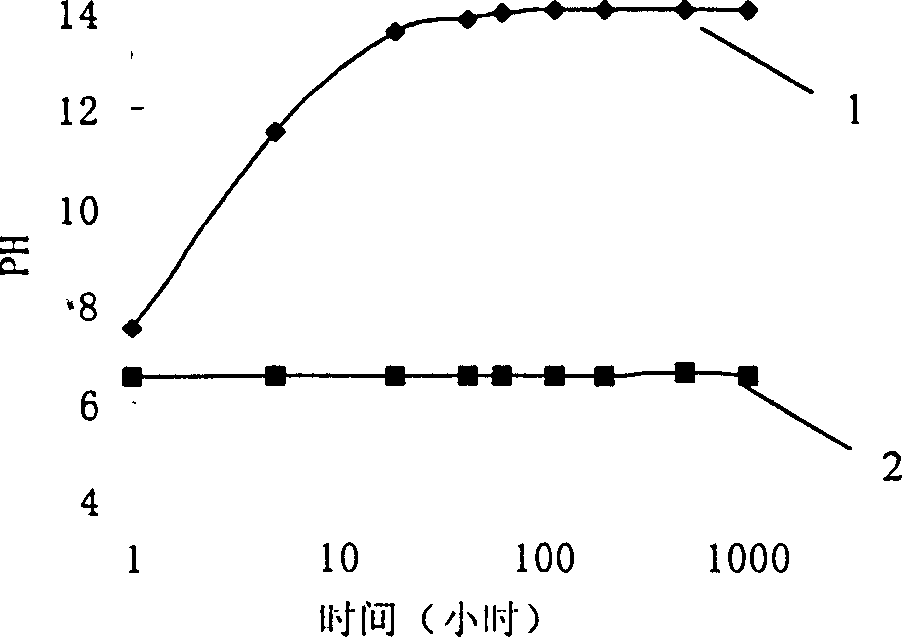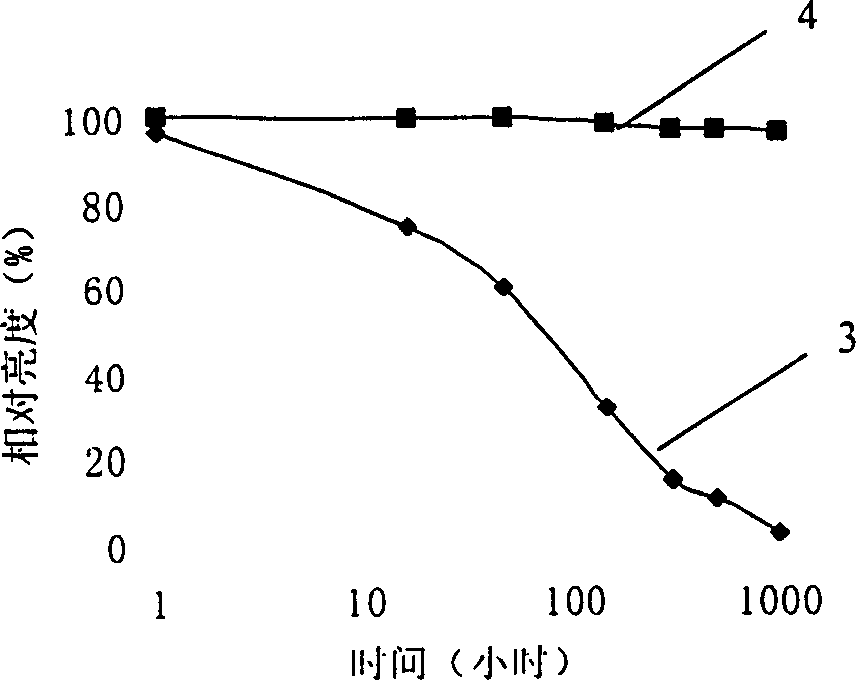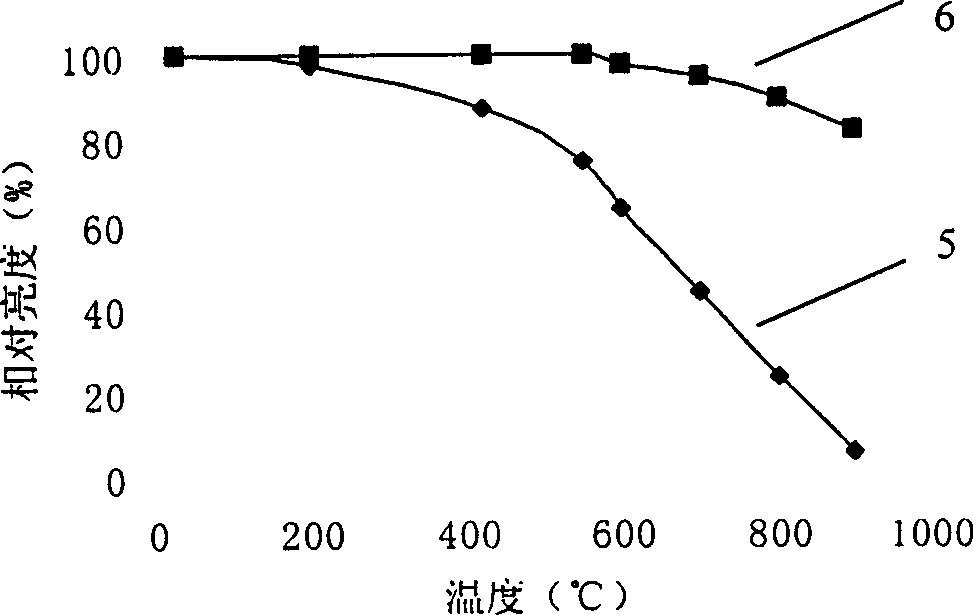Long persistence phosphor of alkali earth aluminate for SiO2 glass painting and its prepn. method thereof
A long afterglow phosphor, alkaline earth aluminate technology
- Summary
- Abstract
- Description
- Claims
- Application Information
AI Technical Summary
Problems solved by technology
Method used
Image
Examples
Embodiment 1
[0060] 10g ethyl orthosilicate, 5gH 2 O, 76gC 2 h 5 OH and 0.2g HCl were mixed, and ethyl orthosilicate was added under the condition of stirring, and the stirring was continued for 15 minutes to become a uniform transparent solution, which was aged at 40°C for 72 hours. Take 46g strontium aluminate long afterglow phosphor (emission main peak 520nm, particle size d 50 35 μ) was mixed with the above transparent solution and stirred for 15 minutes, filtered and dried naturally. Then heat treatment at 350°C for 30 minutes to obtain SiO 2 5% coating with SiO 2 Glass coated alkaline earth strontium aluminate long persistence phosphor. They were then soaked in water and heated at 500°C-900°C for 30 minutes to observe their pH and relative brightness. Such as figure 1 , figure 2 and image 3 As shown, the results show that the pH is 6.5 after soaking in the aqueous solution for more than 1000 hours, and the relative luminous brightness is 100%. The relative luminance after...
Embodiment 2
[0062] 10g ethyl orthosilicate, 7gH 2 O, 76g C 2 h 5 OH, 0.1gCH 3 COOH was mixed, and ethyl orthosilicate was added under the condition of stirring, and the stirring was continued for 15 minutes to become a uniform transparent solution, which was aged at 50° C. for 48 hours. Take 30g of commercial calcium aluminate long afterglow phosphor (emission main peak 420nm, particle size d 50 40μ) mixed with the above transparent solution for 15 minutes, filtered, dried naturally, and then heat-treated at 320°C for 30 minutes to obtain SiO 2 10% coating with SiO 2 Glass coated alkaline earth calcium aluminate long persistence phosphor. They were then soaked in water and heated at 500°C-900°C for 30 minutes to observe their pH and relative brightness. Such as Figure 4 , Figure 5 and Figure 6As shown, the results are shown as follows: the pH is 7.0 after soaking in the aqueous solution for more than 1000 hours, and the relative luminous brightness is 100%. The relative lumin...
Embodiment 3
[0064] Using the same method as in Example 1, and with 0.1g H 2 SO 4 Instead of HCl, the results are as follows: the pH is 6.5 after soaking in the aqueous solution for more than 1000 hours, and the relative luminance is 100%. The relative luminance after heat treatment at 900°C is 85%.
PUM
 Login to View More
Login to View More Abstract
Description
Claims
Application Information
 Login to View More
Login to View More - R&D
- Intellectual Property
- Life Sciences
- Materials
- Tech Scout
- Unparalleled Data Quality
- Higher Quality Content
- 60% Fewer Hallucinations
Browse by: Latest US Patents, China's latest patents, Technical Efficacy Thesaurus, Application Domain, Technology Topic, Popular Technical Reports.
© 2025 PatSnap. All rights reserved.Legal|Privacy policy|Modern Slavery Act Transparency Statement|Sitemap|About US| Contact US: help@patsnap.com



